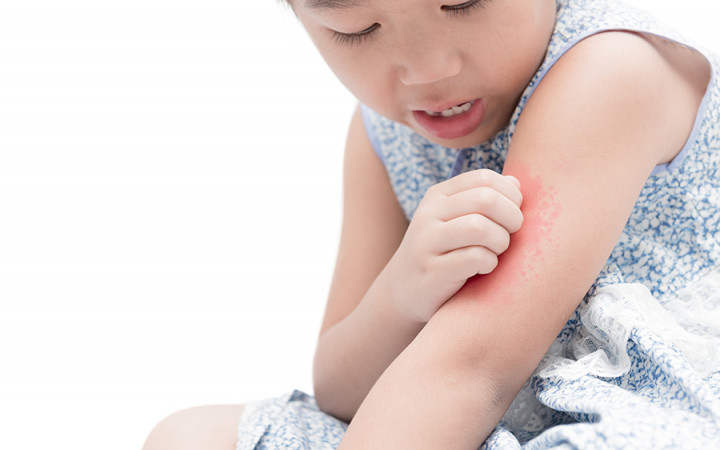Today’s Wonder of the Day was inspired by Mia. Mia Wonders, “Why do we get itchy?” Thanks for WONDERing with us, Mia!
Do you ever pretend that you're an explorer in ancient times? It's fun to go hiking in a state or national park on a new trail and imagine that you're a trailblazer anxious to see what's up ahead. Perhaps you'll discover a stunning waterfall that's never been seen by human eyes before!
Have you ever given much thought to what it was really like to be an explorer long, long ago, though? Without modern conveniences like sunscreen and bug spray, just entering a forest or jungle could be a dangerous proposition.
Even today, forgetting bug spray, for example, can leave you with some souvenirs of your adventure in the form of itchy bug bites. Mosquitoes and ticks are often the culprits, but there's another critter that can leave you itching something fierce: the chigger.
Chiggers are tiny red mites that are arachnids and thus related to spiders, ticks, and scorpions. You may hear them referred to by other names, such as harvest mites, red mites, or scrub mites.
They're usually found along the edges of forests and grassy fields or near streams and lakes. Since they're tiny and can usually only be seen with a magnifying glass, you usually won't realize you've come across chiggers until you start itching.
Chiggers progress through several phases in their life cycles. Beginning as eggs, they hatch as larvae. They then grow into nymphs and eventually become adults. Humans and animals only have to worry about chiggers when they're in their larvae stage.
Nymphs and adult mites feed on plant matter. For larvae to develop, however, they need proteins that they find within the skin cells of animals and sometimes humans. Sitting on vegetation, such as tall grasses, they latch onto animals or humans as they pass.
The tiny larvae have claws that they use to attach themselves tightly to an animal or a human. Although the itchy skin irritation we see later as a result of the activity of chiggers is usually referred to as a "bite," chiggers don't actually bite. They also don't burrow under the skin or suck your blood.
Instead, they pierce the skin with their mouths and inject a specialized digestive enzyme that breaks down skin cells from the inside. The enzyme also hardens the surrounding skin tissue, creating a straw-like tube known as a stylosome. Chiggers can then suck out the protein-filled skin cell fluids.
Amazingly, this piercing of your skin and sucking out of skin cell fluids usually isn't felt. However, it does irritate the skin and leave itchy red bumps that show up a few hours to a day or so later.
These bumps can look like pimples or a rash. They are also usually incredibly itchy and can cause discomfort for several days. Chiggers like enclosed spaces, so you'll usually see the red bumps appear in warm skin folds or areas where clothing was tight against the body, such as the waist or the ankles where your socks were.
Fortunately, chiggers don't pass diseases and are mostly harmless except for the itching bumps they cause. If you find yourself attacked by chiggers, simply wash thoroughly with warm water and soap to make sure all remaining chiggers are removed.
You can then treat the main symptom — itching — with a variety of over-the-counter remedies for itching, such as calamine lotion or anti-itch creams that contain hydrocortisone and/or antihistamines.
If you tell someone you have chigger bites, they may recommend covering them with nail polish. This is unnecessary, however. An old wives' tale about chiggers is that they burrow under the skin, and nail polish was believed to seal them in and kill them. Scientists, however, have proved that they don't burrow under the skin, so nail polish isn't an effective treatment.




